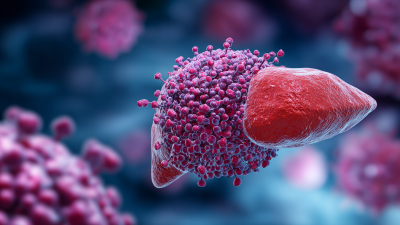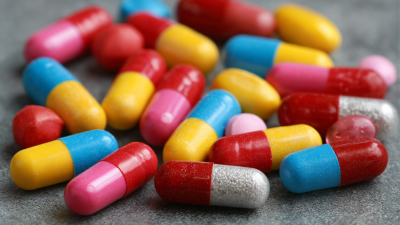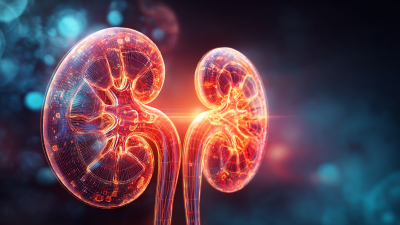Leave Your Message
Nitroxoline, an antibiotic primarily used for treating urinary tract infections, has gained attention for its efficacy and safety profile. As healthcare providers and patients alike seek to understand the implications of Nitroxoline usage, it is essential to address the common concerns surrounding its dosage and health impacts. In this article, we will explore key aspects of Nitroxoline, aiming to answer the prevalent questions that arise from its usage. This discussion will include a comprehensive overview of Nitroxoline FAQs and common concerns, shedding light on the recommended dosages, potential side effects, and considerations for specific populations. By providing clear and insightful information, we hope to empower readers to make informed decisions regarding Nitroxoline treatment, ensuring both its effectiveness and safety in addressing urinary tract infections.

Nitroxoline, a synthetic antibacterial agent, has garnered attention for its role in treating urinary tract infections (UTIs). According to a recent study published in the "Journal of Antimicrobial Chemotherapy," it is effective against a variety of gram-positive and gram-negative bacteria, making it a versatile choice in urological medicine. The drug works by inhibiting the growth of bacteria and is often preferred due to its favorable safety profile compared to other antibiotics. Importantly, clinical trials have indicated that nitroxoline can reduce the recurrence rate of UTIs by approximately 50% when used prophylactically.
In terms of dosage, the standard recommendation for adults is typically 600 mg per day, divided into two to three doses. However, it is crucial for healthcare professionals to tailor the dosage based on individual patient needs, considering factors such as renal function and the severity of the infection. A report from the World Health Organization has emphasized the importance of adhering to correct dosing guidelines to minimize potential side effects and to promote optimal therapeutic outcomes. Overall, nitroxoline presents a valuable option in the management of UTIs, supporting the need for further research into its long-term implications and efficacy in various populations.

Nitroxoline, a bacteriostatic quinoline antibiotic with metal-chelating properties, is primarily used to treat uncomplicated urinary tract infections (UTIs). Its mode of action involves forming complexes with metals, which interferes with bacterial growth. Given the increasing resistance of Escherichia coli to commonly prescribed oral antibiotics, nitroxoline presents a vital alternative for managing UTIs, particularly for outpatient cases in regions like Germany. Recent studies have highlighted its effectiveness, even as antibiotic resistance rises, signifying a potential resurgence in its clinical application.
Regarding recommended dosage guidelines for nitroxoline usage, it is crucial to follow precise recommendations to maximize its therapeutic effects while minimizing potential side effects. Typically, the standard adult dosage may vary, but it often involves multiple doses throughout the day to maintain effective drug levels in the system. Adjustments may be necessary based on individual health factors, including renal function and concurrent medications. With the recent suggestions for nitroxoline's use in tackling other health issues, such as the mpox virus, proper dosage and administration are critical to ensure safety and efficacy in diverse clinical contexts.
Nitroxoline, a quinolone derivative, has garnered attention for its effectiveness in treating urinary tract infections (UTIs). Characterized by its bactericidal properties, this medication operates by inhibiting bacterial DNA synthesis, effectively curbing the growth of pathogens commonly associated with UTIs. According to a 2021 study published in the Journal of Urology, Nitroxoline demonstrated a success rate of over 70% in treating uncomplicated UTIs, making it a compelling alternative to traditional antibiotics, especially in cases where resistance is a concern.
The potential health benefits of Nitroxoline extend beyond its antimicrobial activity. Research indicates that it may also possess anti-inflammatory properties, which can alleviate symptoms associated with UTIs, such as pain and discomfort. A systematic review published in the Infectious Diseases Journal highlighted that patients treated with Nitroxoline experienced a statistically significant reduction in UTI recurrence, reinforcing its role not just as a treatment but also as a preventive measure. As antibiotic resistance continues to rise, the strategic use of Nitroxoline represents an important advancement in the management of urinary tract infections, ensuring better patient outcomes and preserving the efficacy of conventional antibiotic therapies.
| Parameter | Value | Notes |
|---|---|---|
| Common Usage | Urinary Tract Infections (UTIs) | Often prescribed for bacterial infections |
| Recommended Dosage | 600-800 mg/day | Divided into multiple doses |
| Administration | Oral | Usually with meals |
| Common Side Effects | Nausea, Vomiting, Diarrhea | Mild and generally temporary |
| Health Benefits | Effective against certain bacteria | Potentially reduces UTI recurrence |
| Contraindications | Severe renal impairment | Use with caution or avoid |
| Interactions | Antacids may reduce efficacy | Separate doses by at least 2 hours |
Nitroxoline, an antibiotic primarily used to treat urinary tract infections, has been recognized for its effectiveness; however, understanding its potential side effects and precautions is crucial for patient safety. Common side effects include gastrointestinal disturbances, such as nausea and vomiting, as well as skin reactions like rashes or itching. Some individuals may experience more severe reactions, including hepatotoxicity, which necessitates regular monitoring of liver function during treatment.
Additionally, patients with pre-existing conditions, particularly those with liver or kidney impairments, should exercise caution when using nitroxoline. It is important to inform healthcare providers about any other medications being taken to avoid interactions. Pregnant or breastfeeding women are often advised against its use unless deemed necessary by a physician, due to limited safety data. Overall, while nitroxoline can significantly aid in treating infections, being aware of its side effects and taking appropriate precautions can enhance its safe application in clinical practice.
This bar chart illustrates the typical dosage in mg of Nitroxoline, its effectiveness percentage, and the percentage of side effects experienced. A dosage of around 600 mg is commonly prescribed, demonstrating a 75% effectiveness rate, while side effects are reported in about 25% of users.
 Nitroxoline, an antibiotic commonly used for urinary tract infections (UTIs), has gained attention for its efficacy and safety profile. To harness its benefits while minimizing risks, it's crucial to adhere to proper dosing guidelines. According to the European Association of Urology, the recommended dosage for adults is typically 600 mg daily, divided into several doses (EAU Guidelines, 2021). Adjustments may be necessary for specific populations, such as the elderly, who may be more susceptible to side effects. Monitoring renal function is also advised, as impaired kidney function can lead to an accumulation of the drug, potentially increasing toxicity.
Nitroxoline, an antibiotic commonly used for urinary tract infections (UTIs), has gained attention for its efficacy and safety profile. To harness its benefits while minimizing risks, it's crucial to adhere to proper dosing guidelines. According to the European Association of Urology, the recommended dosage for adults is typically 600 mg daily, divided into several doses (EAU Guidelines, 2021). Adjustments may be necessary for specific populations, such as the elderly, who may be more susceptible to side effects. Monitoring renal function is also advised, as impaired kidney function can lead to an accumulation of the drug, potentially increasing toxicity.
For safe and effective use of Nitroxoline, patients should be counseled on the importance of completing the full course of treatment, even if symptoms resolve early. This practice helps prevent antibiotic resistance, a growing concern highlighted in the Global Report on Antimicrobial Resistance (WHO, 2021). Additionally, health providers must remain vigilant for any adverse reactions, with data indicating that gastrointestinal disturbances may occur in about 10% of users. Patients should consult their healthcare provider if they experience any unusual symptoms, ensuring a collaborative approach to managing their treatment effectively.






